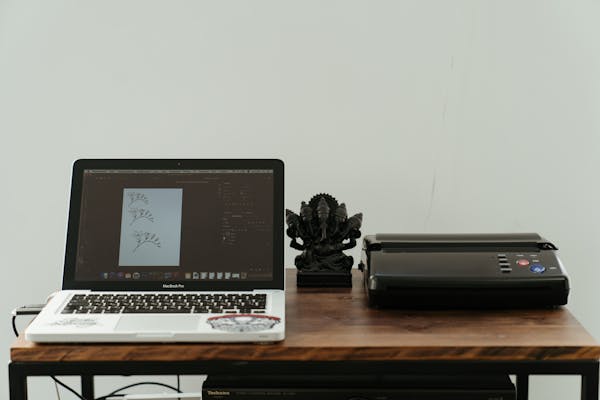Table of Contents
In this edition of Sliced, the 3D Printing Industry news digest, we cover the latest business developments, partnerships, and acquisitions in the additive manufacturing sector.
Today’s edition features new 3D printing partnerships, new 3D printer debuts, software updates, new medtech innovations and a new additive manufacturing training network for US students.
Read on for the most recent updates from Fraunhofer, Laser Prototypes Europe, Vertex Manufacturing, 3DPRINTUK, Marine Corps, Creaform, Dimension Inx, Biologic Models, and more.

New 3D printing partnerships from PostProcess Technologies, Laser Prototypes, Vertex Manufacturing and 3DPRINTUK
Kicking off this week’s round-up is a new partnership between automated post-processing system manufacturer PostProcess Technologies and the Fraunhofer Research Institution for Additive Manufacturing Technologies (IAPT) to drive forward the production scalability of 3D printing with automated support removal and surface finishing.
Through the partnership, Fraunhofer IAPT will improve the end-to-end systemized digitization of its fused deposition modeling (FDM) processes by installing a DECI support removal system from PostProcess. The ultimate goal of the two partners is to design a fully integrated and automated production line to produce FDM parts with a seamless support removal process.
Fraunhofer IAPT and PostProcess are also developing surface finishing technology for metal parts on PostProcess’ DECI Duo system, citing these steps as “just the beginning” of what will be an ongoing partnership between the two parties.
Meanwhile 3D printer manufacturer Stratasys has installed a Neo450s stereolithography 3D printer at Belfast-based service bureau Laser Prototypes Europe (LPE). LPE provides 3D printing services for a range of industries including aerospace, automotive, consumer products, electronic devices and medical, and expects to see “immediate benefits” with the addition of the Neo450s.
“LPE has such a long history in additive manufacturing, so it’s notable the team has chosen to invest in our technology to bolster its prototyping capabilities,” said Daniel Thomsen, Managing Director for Stereolithography products at Stratasys. “We’re committed to raising the industry standard with our next generation large-frame industrial stereolithography 3D printers that provide customers superior quality parts with outstanding accuracy and detail, at speed.”

Elsewhere, CNC machining and manufacturing service provider Vertex Manufacturing has enlisted the help of 3D printer manufacturer VELO3D to meet the growing demand for 3D printed “impossible” metal parts. Vertex will take delivery of VELO3D’s Sapphire additive manufacturing system later this month, which will be set up to print parts in nickel-based superalloy Inconel 718, and plans to install additional machines from VELO3D in the future.
“With unique technology providing the capability to create production parts that would be impractical or impossible using other methods, our new additive manufacturing solution from VELO3D means customers will have even more freedom to design and engineer some of the most complex geometries imaginable,” said Greg Morris, Co-founder and CEO of Vertex Manufacturing.
Rounding off this edition’s partnerships news is 3D printing service bureau 3DPRINTUK, who has announced a sponsorship agreement of Formula Student racing team, Team Bath Racing (TBR). 3DPRINTUK has been working with the team to produce some final car parts for them, including the plenum, which is a large-volume container that sits between the vehicle’s turbo charger and the engine air take, printed via Multi Jet Fusion (MJF) in Nylon 12 material. The company also printed a range of components for the front wing of the car using SLS.
“3D printing really is the most cost and time effective way of manufacturing complex parts,” said Conor Smith, Outboard Suspension Designer and Sponsorship coordinator of the TBR21 car. “Other processes cost an order of magnitude more, and there are some parts on our car that we just wouldn’t be able to manufacture any other way (they are designed specifically for 3D printing).
“Also, for certain applications – particularly for prototyping – the speed of 3D printing means that we can turn things around in a few days, which really speeds up our design process.”

Markforged to debut FX20 at Formnext 2021
Metal and carbon fiber 3D printer manufacturer Markforged has announced it will debut its newest 3D printer, the FX20, at Formnext this November. The FX20 is cited to be the “biggest, fastest, and most sophisticated” 3D printer the company has produced yet, and will transform the Digital Forge into a next-generation additive manufacturing platform capable of printing high-temperature thermoplastics reinforced with continuous fiber.
The FX20 will be capable of printing high-strength, more accurate and higher performance parts for demanding industries such as aerospace, defense, automotive, and oil and gas. After debuting at Formnext, the machine is expected to be shipping worldwide in the first half of 2022.
“The FX20 is a beast of a machine and represents our commitment to providing innovative solutions to our customers to empower them to build anything they can imagine,” said Shai Terem, President and CEO of Markforged. “The addition of the FX20 to the Digital Forge strengthens our leading position in the additive manufacturing market by enabling the robust production of lightweight, advanced composite parts. With this combination of hardware and software, our customers will be able to count on Markforged for production of end-use, mission critical parts that are required to overcome the limitations of traditional manufacturing.
“This builds resilient and sustainable supply chains that extend directly to the point-of-need.”
3D printing software updates from US Marine Corps and Creaform
The US Marine Corps has announced plans to establish a secure, digital repository called the Digital Manufacturing Data Vault (DMDV) that will enable marines to tap into for help building 3D printed spare parts from anywhere in the world. Over the past few years, the organization has been creating a digital repository of 3D printing files and technical data, and is now seeking to transform this into something far more organized.
The long-term goal is to build a centralized, aggregated and secure repository that acts as a one-stop-shop for approval processes, version control, approved part drawings, and technical data packages. The DMDV is planned to be implemented during fiscal 2024.
Elsewhere, 3D measurement system manufacturer Creaform has announced the release of its latest version of its VXelements platform, 9.0. The upgrade includes enhancements to a number of existing features with the goal of improving the synergy between software and hardware.
The latest version of the VXelements platform includes a new VXelements viewer, a free version of the platform used for data sharing to make collaborative projects simpler and faster, and a new smart resolution feature available for the latest generation of Creaform 3D scanners that allows users to generate scans from multiple resolution levels to better reproduce details, edges, and high curvatures.
Meanwhile, the platform’s VXmodel module has additional Flatten mesh, Extrude boundaries, and Extend boundaries features, and its VXinspect module has seen improvements such as One-click entity creation, new construction methods for geometrical entities, and new reporting capabilities.

America Makes announces Ohio Secondary Education AM Training Network
US 3D printing national accelerator America Makes has launched its Ohio Secondary Education Additive Manufacturing Training Network with the goal of building a 3D printing talent pipeline across the state. According to the 2020 Ohio Manufacturing Report by the Ohio Manufacturing Extension Partnership (MEP), more than half of the state’s manufacturers identified a shortage of skilled workers as the number one challenge impeding business growth across the state.
To address this, America makes has launched its additive manufacturing training network for Ohio schools, students and educators to provide training opportunities for 3D printing. The network will leverage best practices and industry-vetted content and curriculum from America Makes and its membership community, and will see 10 Ohio secondary schools participate.
“There’s no question that our state and our nation are facing a significant skilled labor shortage and misalignment of skills and competencies,” said Josh Cramer, America Makes Education & Workforce Development Director. “We need to take action now with K-12 students, with immediate emphasis on focusing on secondary education students and empowering their educators – from teachers to principals and guidance counselors – to help them increase students’ awareness of AM technologies and advanced manufacturing careers.”
Dimension Inx awarded “Tissue Papers” patent
Chicago-based biofabrication firm Dimension Inx has announced the issuance of a US patent (No. 11,045,581) covering highly porous, mechanically robust advanced bioscaffolds called “Tissue Papers” for tissue and organ repair and regeneration. The Tissue Papers contain bioactive decellularized extracellular matrix (dECM) particles renowned for their ability to induce new tissue formation, and the scaffolds are mechanically robust enough to be cut, rolled, folded, or sutured without breaking.
The Tissue Papers can reportedly be applied to repair or regenerate damaged or missing tissues and organs, and are cited to play a role in tissue modeling and survival. The scaffolds have been used within research to promote the survival of human ovarian tissue in the lab, presenting potential applications for drug discovery and fertility preservation.
The patent is specifically for “Surgically-Friendly Tissue Papers from Organ-Specific Decellularized Extracellular Matrices”, and Dimension Inx has exclusive worldwide rights to commercialize the invention as part of a broad intellectual property portfolio licensed from Northwestern University.

3D printing MedTech innovations
Continuing with new innovations in the medical sector, a German-Polish Fraunhofer High-Performance Center is researching new technologies for the use of 3D printing processes in medical technology. The Fraunhofer Institute for Material and Beam Technology IWS in Dresden and the Fraunhofer Institute for Machine Tools and Forming Technology IWU in Chemnitz are involved in the ”Additive Technologies for Medicine and Health” (ATeM) Center.
The project partners are currently working on 3D printing medtech applications, including dentistry, 3D printed hip joints and lab-on-a-chip systems. Regarding dentistry, the ATeM Center is investigating the on-demand manufacturing of more complex implants immediately after 3D scans of the oral cavity. The other scenario, looking at smart hip joints, involves directly integrating sensors into medical components such as knee and hip joints that could detect inflammatory reactions after surgery. The partners will present their innovations in the third quarter of this year.
Meanwhile, 3D printed protein model provider Biologic Models has used a 3DUJ-553 3D printer from Mimaki, a manufacturer of wide-format inkjet printers and cutters, to produce intricate molecular visualization models. The company has produced models of coronavirus to help with the rapid development of countermeasures to address the ongoing pandemic outbreak.
The company used the 3DUJ-553’s 10-million color capability to produce protein replicas that make biomedical research clearer and more identifiable to the viewer. With the company’s upcoming coronavirus models, individual mutations will be tracked on a ribbon model of the Spike Protein’s Receptor Binding Domain and each new mutation will be assigned a unique color.
“Mimaki 3D prints facilitate both a physical and digital learning experience that was often unachievable because of the limitations of powder-based printing,” said Casey Steffen, Director of Operations at Biologic Models. “In fact, a new series of ‘Mechanism-of-Action’ protein models is set to begin releasing later this summer. This series of 3D printed models integrates AR experiences that allow viewers to digitally explore the protein data used to create the 3D printed protein model.
“Exclusive to these Mimaki 3D prints is a never-before-seen molecular animation that visualizes how the Spike Glycoprotein changes shape during infection.”

Nominations for the 2021 3D Printing Industry Awards are now open, have your say who is leading the industry now.
Subscribe to the 3D Printing Industry newsletter for the latest news in additive manufacturing. You can also stay connected by following us on Twitter and liking us on Facebook.
Looking for a career in additive manufacturing? Visit 3D Printing Jobs for a selection of roles in the industry.
Subscribe to our YouTube channel for the latest 3D printing video shorts, reviews and webinar replays.
Featured image shows SARS-CoV-2 Virion model from Biologic Models with the Sliced logo.







